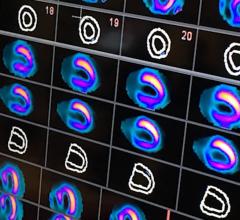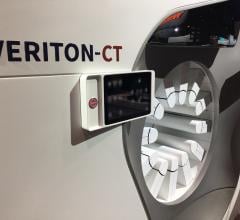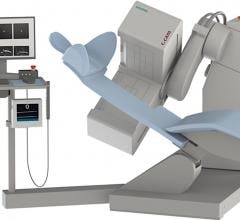June 12, 2013 — Siemens Healthcare has introduced its xSPECT system that combines the high sensitivity of single-photon emission computed tomography (SPECT) with the high specificity of computed tomography (CT), completely integrating the data from the two modalities, to generate high resolution and quantitative images.
In traditional SPECT/CT imaging, the SPECT image has always been reconstructed at a low-resolution matrix — much lower than the CT portion of the exam. As a result, the CT resolution must be downgraded dramatically to the level of SPECT to enable mechanical fusion of the two modalities. Siemens’ new Symbia Intevo xSPECT system reconstructs both the SPECT and CT portions of the image into a much higher frame of reference than previous systems for precise, accurate alignment facilitating the extraction and deep integration of medically relevant information. This ability is also the basis for differentiating between tissue boundaries in bone imaging. With xSPECT Bone physicians can potentially provide additional support for detection and distinguishing between cancerous lesions and degenerative disorders.
Quantitative SPECT
Symbia Intevo’s precise alignment of SPECT and CT provides physicians with essential volumetric information from the CT scan, enabling accurate and consistent quantitative assessment — a numerical indication of a tumor’s level of metabolic activity. With accurate quantitative assessment, the physician can apply quantitative information to assess whether a patient's course of treatment has regressed, stabilized or grown — something that is difficult to do with a purely visual assessment of the tumor.
Reduced CT Radiation Dose
While Symbia Intevo uses more CT data than previous systems, Siemens is still able to limit patient dose by offering combined applications to reduce exposure (CARE). These applications include the CARE Dose4D technique, which can reduce CT radiation dose by up to 68 percent.
Increased productivity and throughput
Symbia Intevo also offers applications to improve productivity and patient throughput. For example, Siemens’ AUTOFORM collimator — which is standard on Symbia Intevo — captures up to 26 more counts, or photons that are generated from radiotracer activity. This increased number of counts potentially boosts image acquisition time and patient throughput.
For more information: www.siemens.com/healthcare


 November 12, 2025
November 12, 2025 









